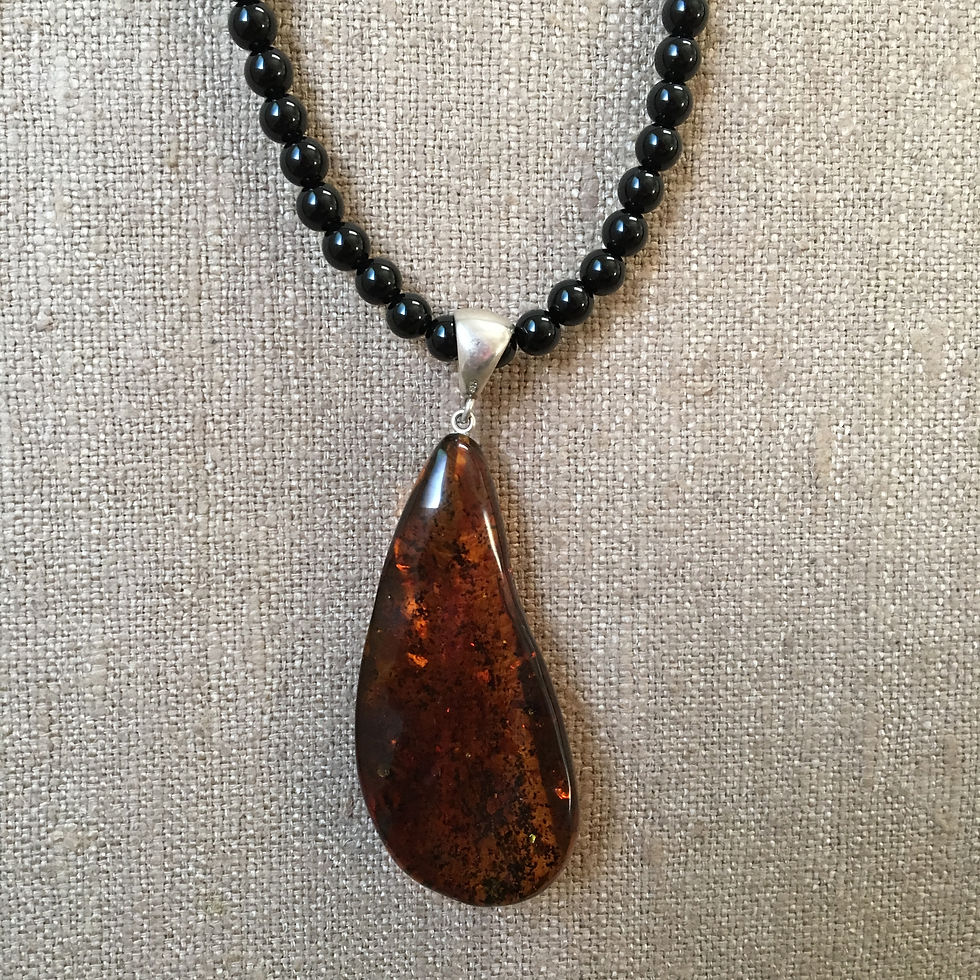
Beads & Stones > Amber
Amber is fossilized tree resin (not sap) that formed millions of years ago. Since it is made of organic material, Amber is not considered a mineral but instead an "organic gem" (same as jet, shell and coral). It's very, very soft with a hardness of 2-2.5 and because of that it's been used in jewelry and ornaments for thousands of years. It is popular as it has marvelous metaphysical properties for psychic protection. It is a powerful healer that gives the person who wears it a sense of health and healing. Amber helps to balance the emotions, clear the mind and release negative energy. Amber health benefits were known for thousands of years and people believed that it can help to treat many different medical conditions. In addition, it is also thought that wearing Amber jewelry can help to minimize anxiety and overcome fatigue. This warm, fiery stone is also directly associated with the Sacral Chakra—that is, the root of all sexual pleasure.
To ensure that you are getting maximum health benefits from your jewelry it is important to make sure that beads or stones are made from genuine Baltic Amber. This is important because other types of Amber don’t have much Succinic Acid in it. Amber that comes from the Baltic Sea is known to contain as much as 3-8% of this acid by weight. When wearing Amber jewelry it is also essential to make sure that it is in contact with some part of your body. This is important because Amber is able to release Succinic Acid only when it is warm from the contact of skin. So basically the longer you will wear Amber jewelry the more health benefits you can expect from it. Amber deposits can be found all over the world (from Austria to New Zealand) but the finest quality Amber comes from the Baltic. The colors can vary from buttery yellow, to clear "amber" color, to brown, to red (referred to as Cherry Amber) and in rare cases even blue. Unfortunately, Blue Amber (found in the Dominican Republic) is so rare that most of the material now exists only in private collections. In Greek mythology it was believed that when Phaeton (the son of the sun god Helios) was killed his sisters grieved so deeply that it turned them into trees and their tears became Amber.
African Amber originated from the Baltic region and were formed into consistent, specific shapes. As always, the larger the bead the more highly prized it was. In general, Amber needs to be worn to absorb the natural oils on our skin. If you leave your Amber unworn for an extended period of time it will start to dry up on the surface, so remember that the more attention you pay to your beads the more beautiful they will become! Tibetan Amber has been traded into the region from the Baltic for more than 2,000 years. Like African Amber beads, the larger the Amber bead the more highly prized it was. However, unlike the African Amber, Tibetans didn't want to waste any of the precious substance, so instead of carving the amber into shapes they just drilled holes in the natural lumps and polished them, preserving some of the original shape. For that reason, Tibetan Amber tends to have a more "organic" look than African Amber. In Tibetan culture amber represents the earth. The majority of Antique Amber in Africa actually originated as raw material found in the Baltic, It was probably traded via the “incense route” down into Africa where it was cut into beads. Generally, but not always, raw lumps of Amber were traded and then carved into beads by the new owners. Amber has been traded into the region for thousands of years so it’s hard to accurately date them. A conservative estimate would be 100-200 years or older.









